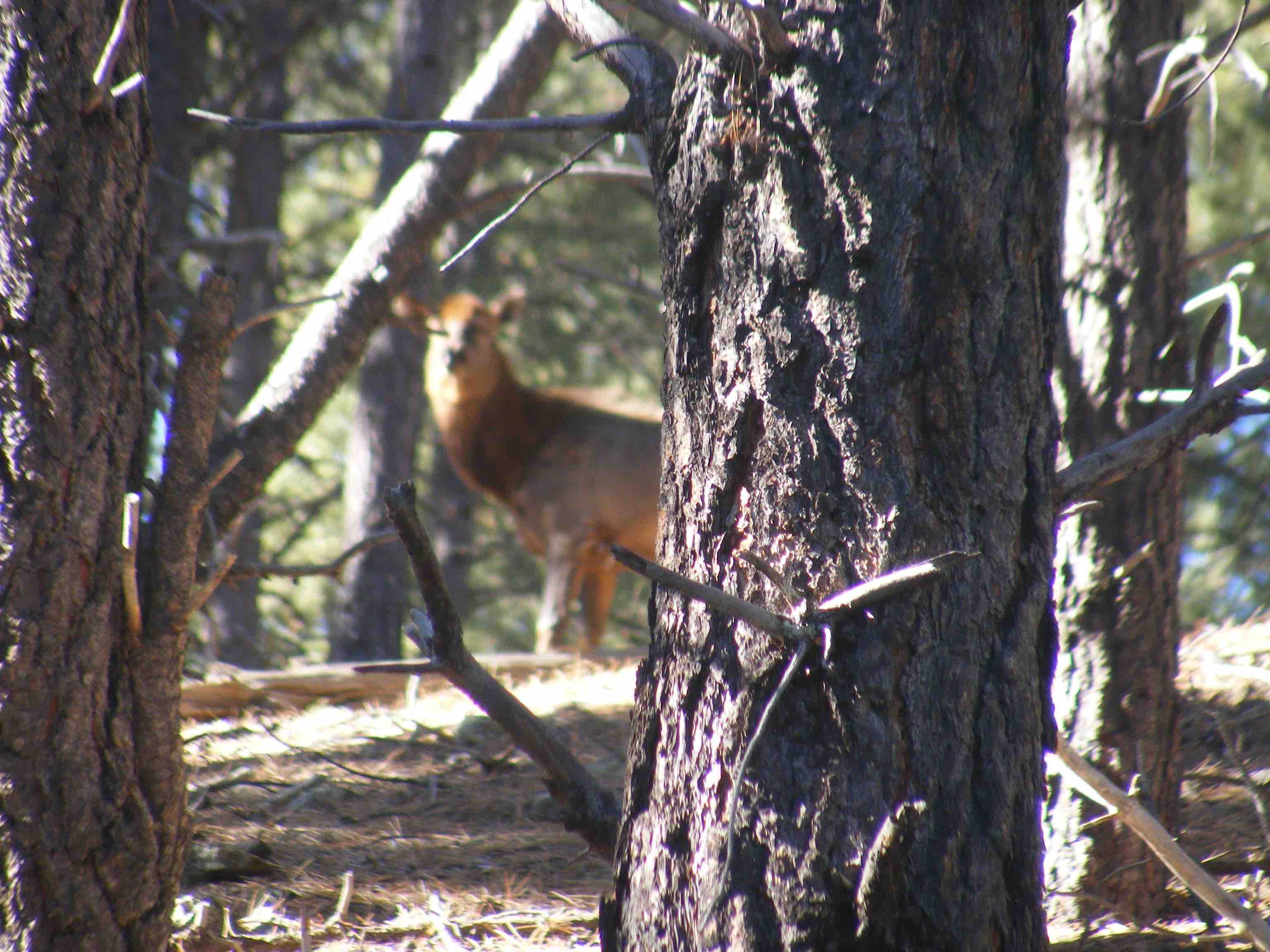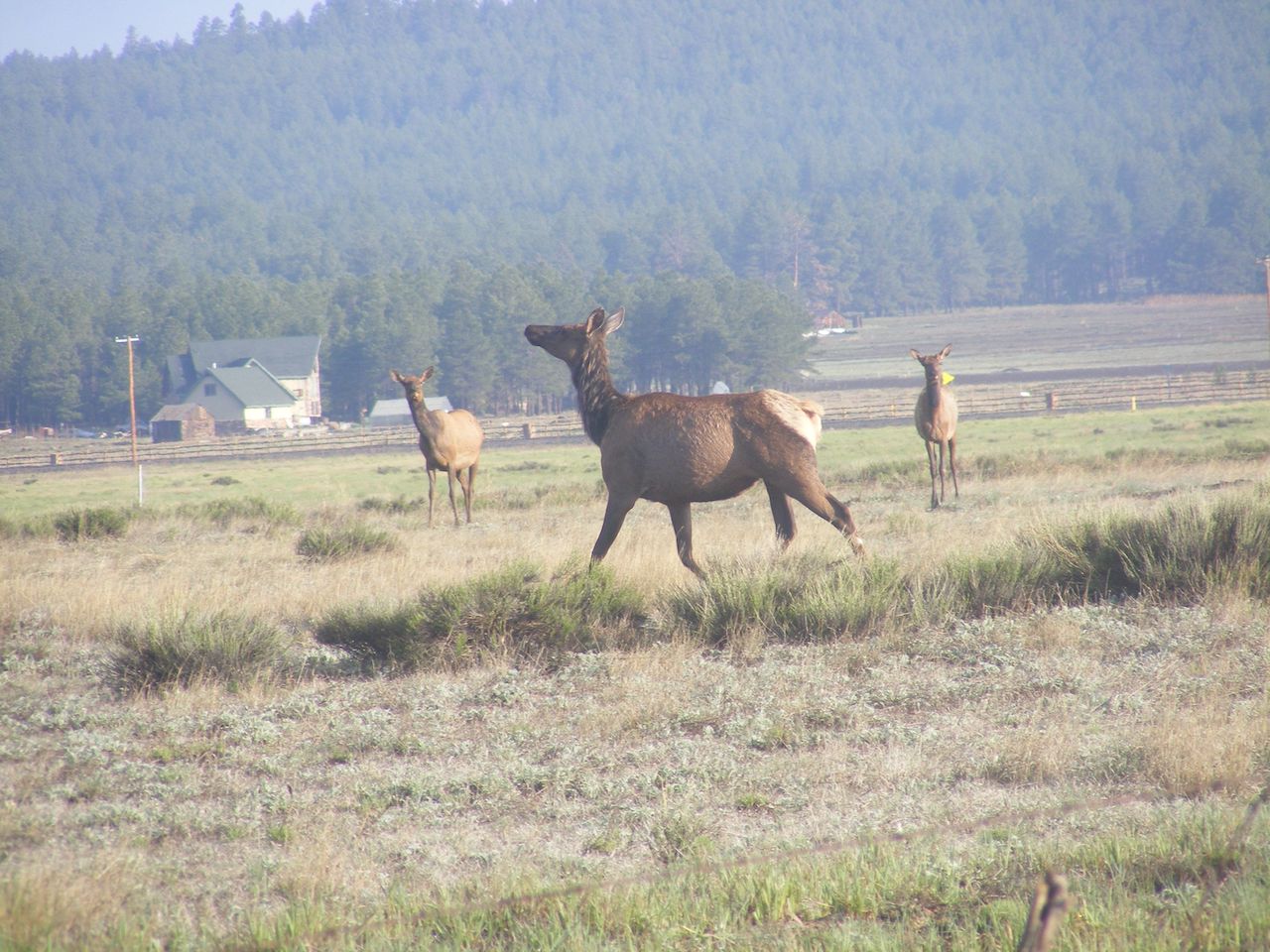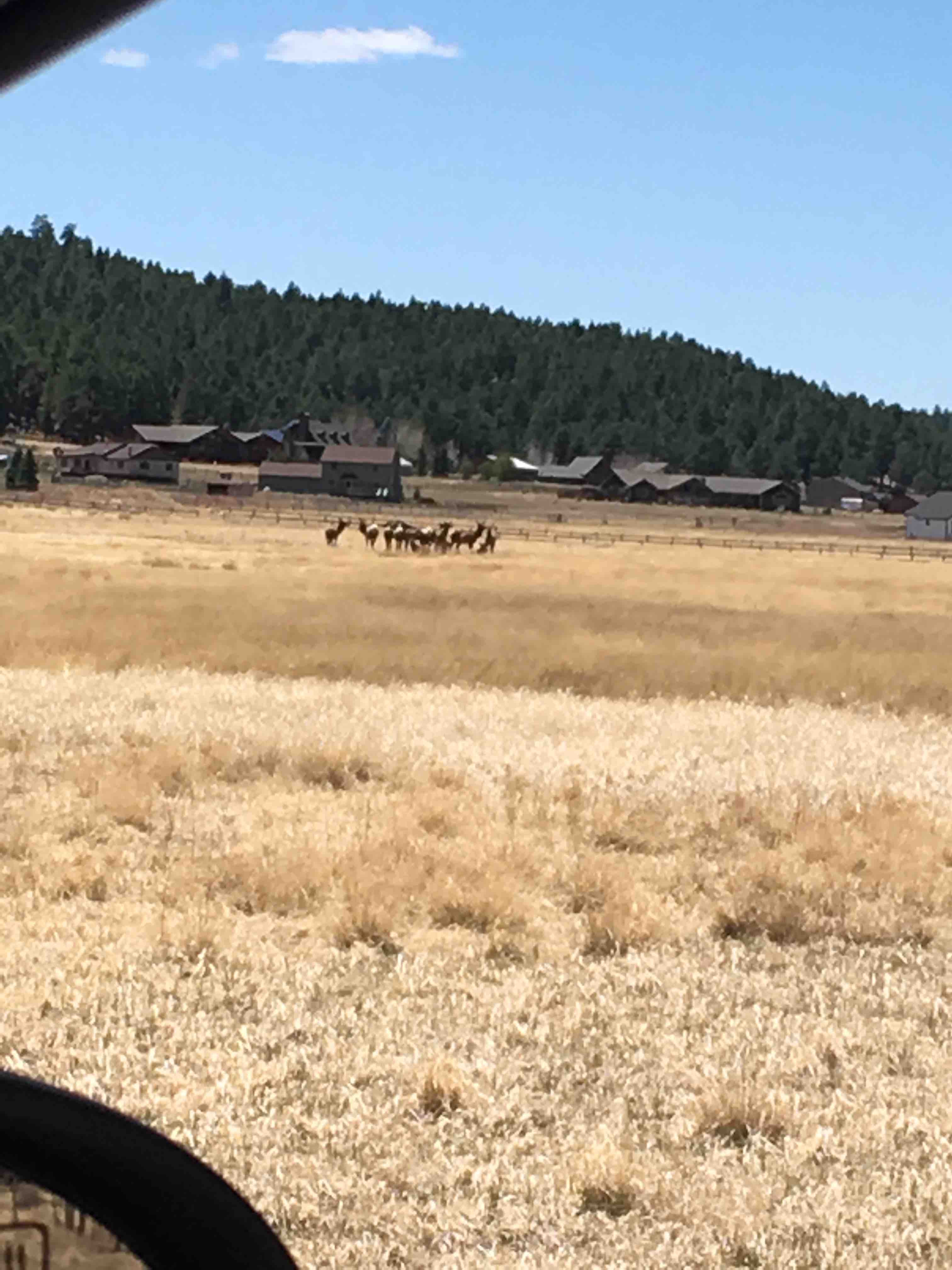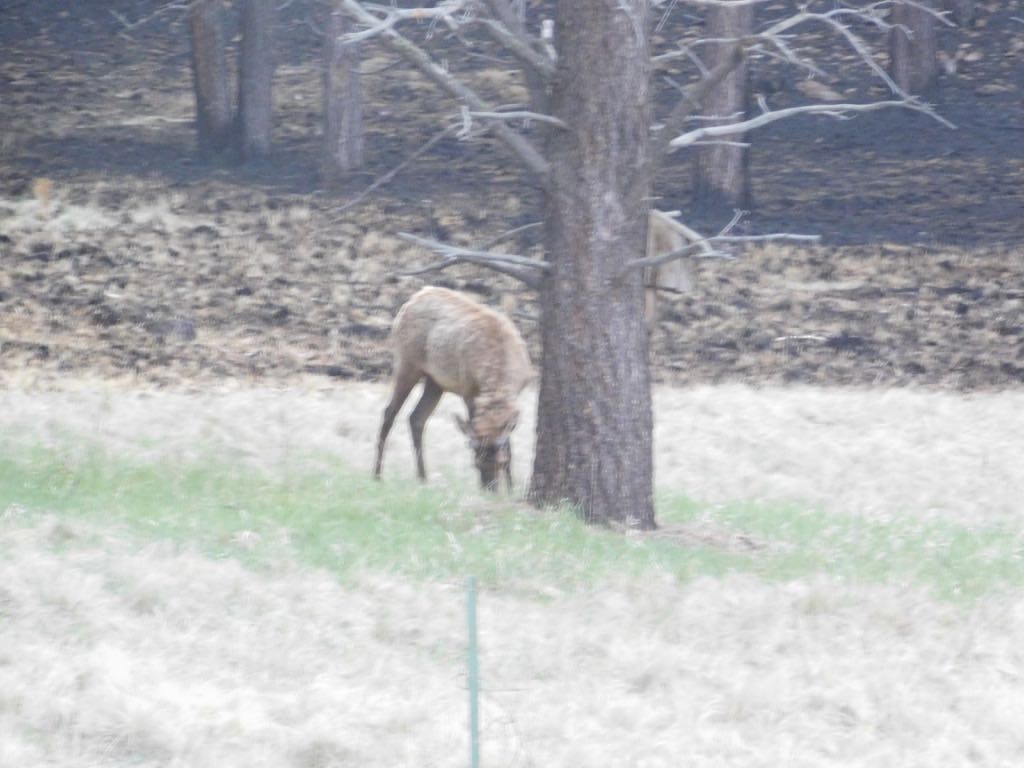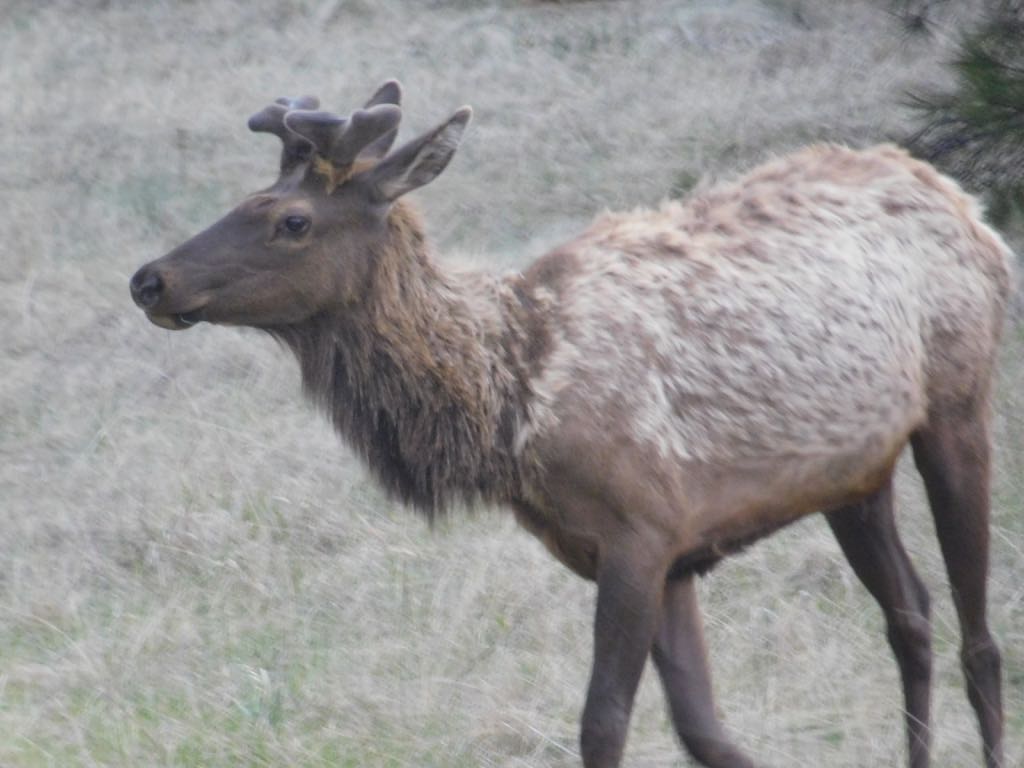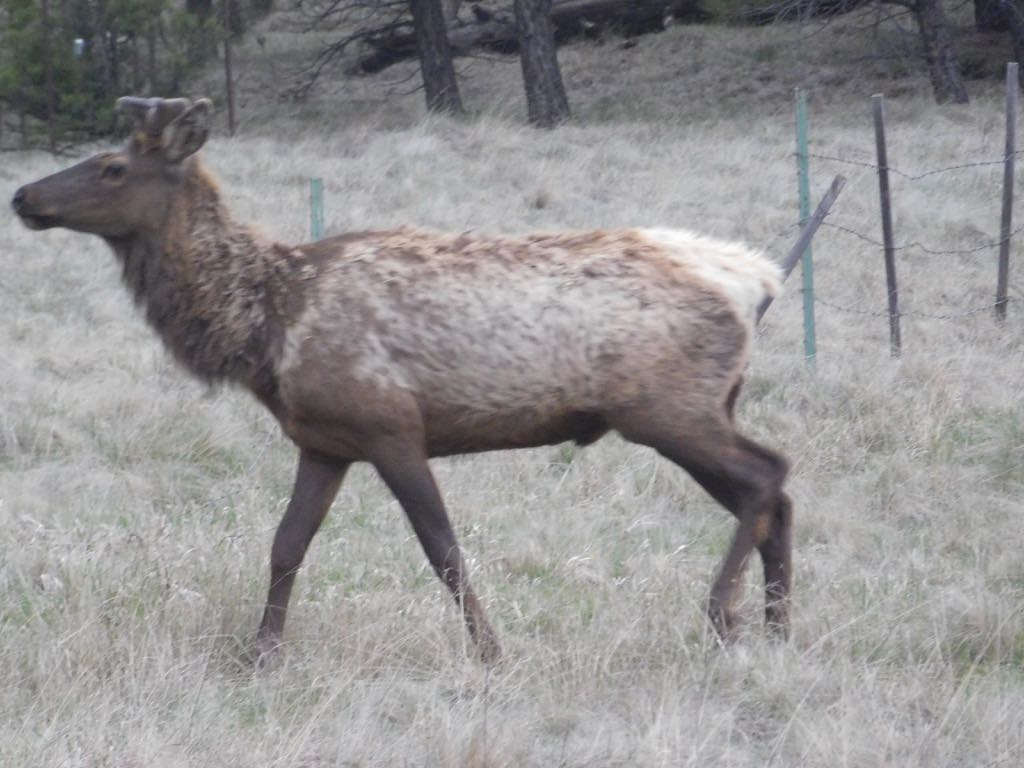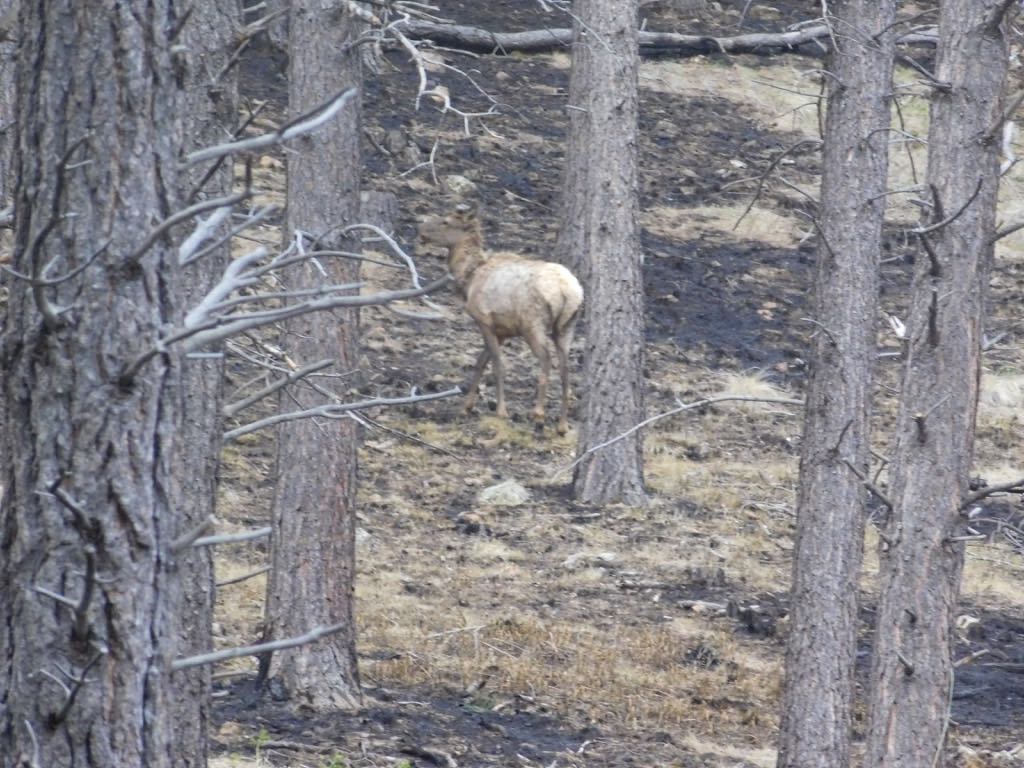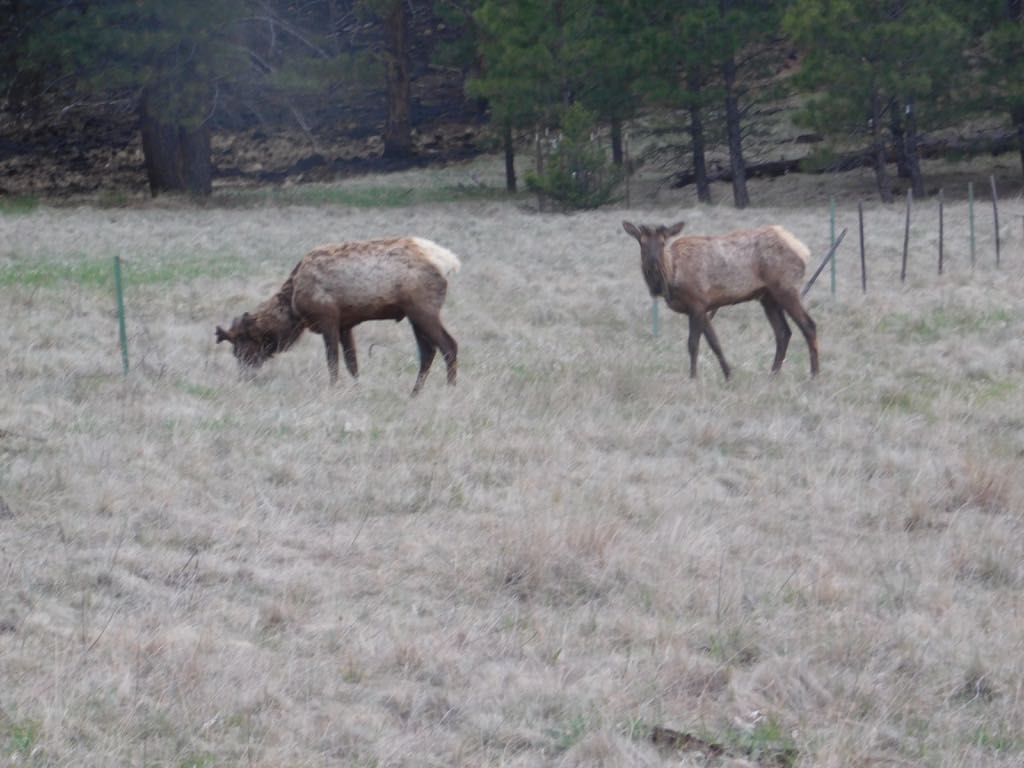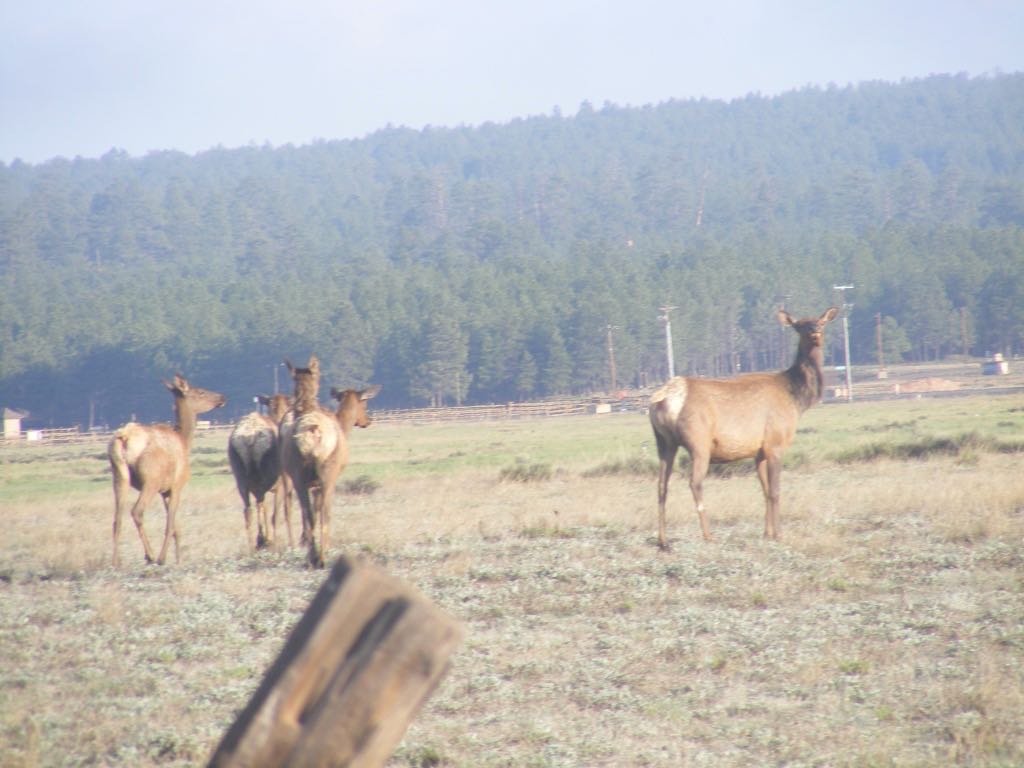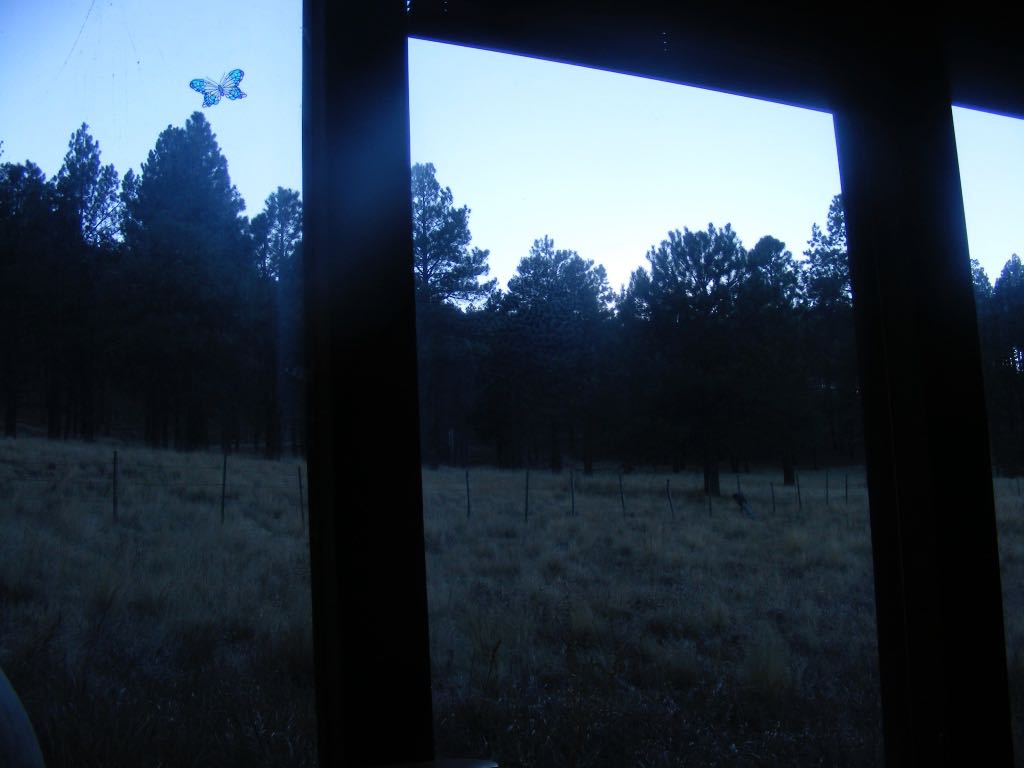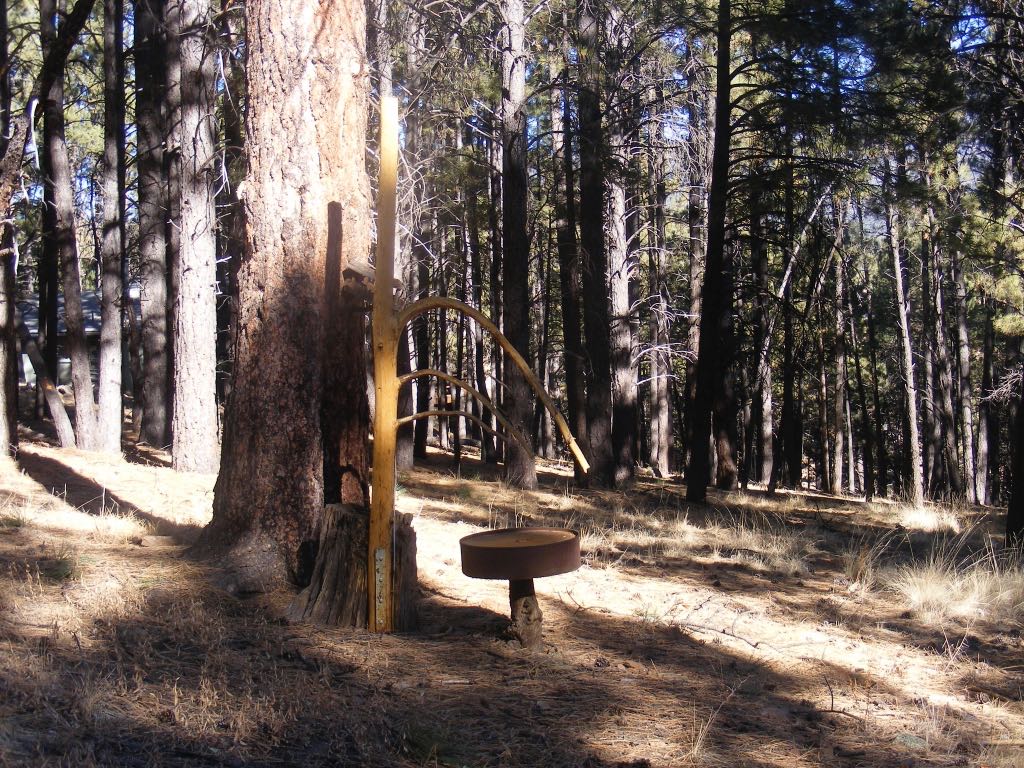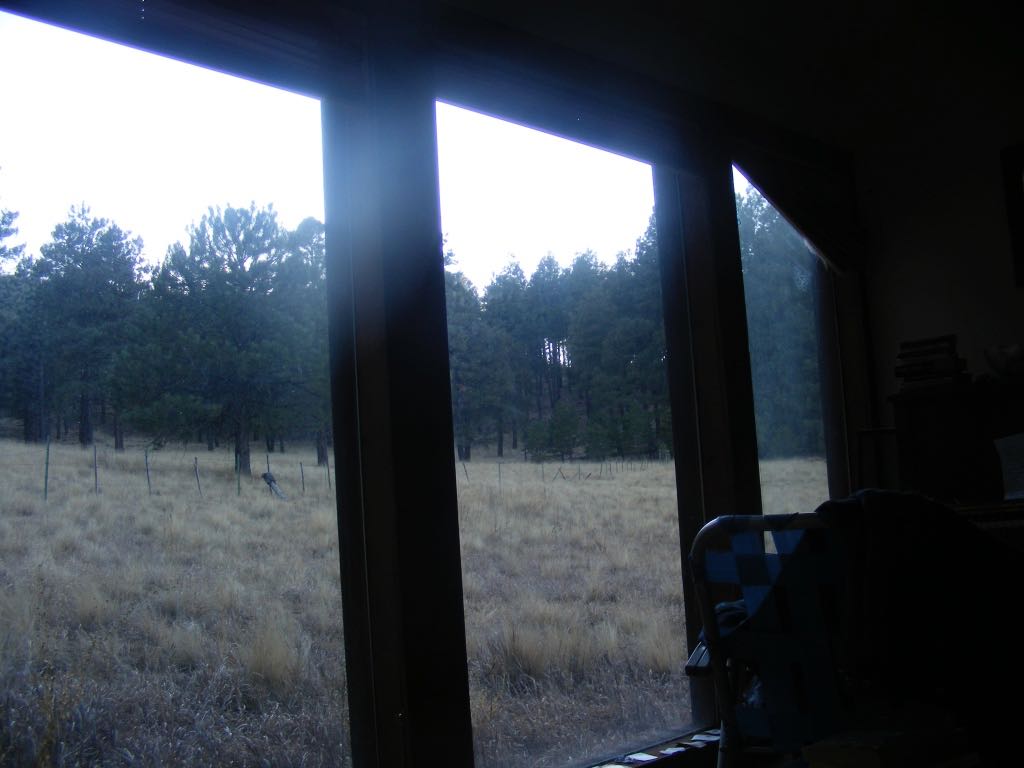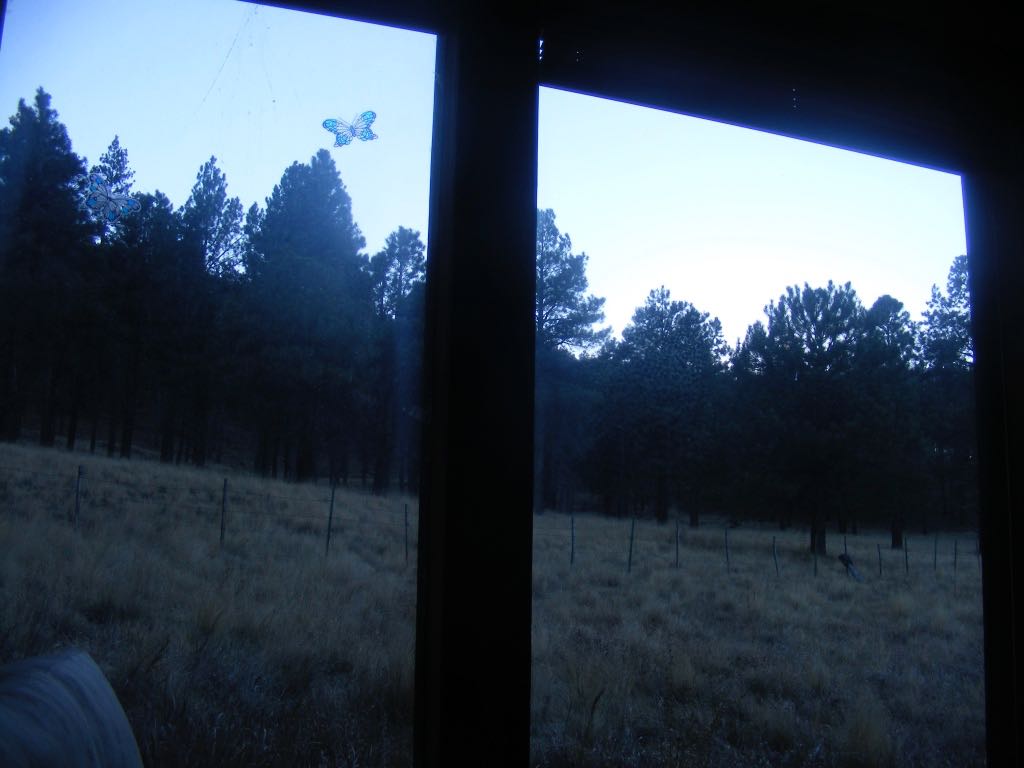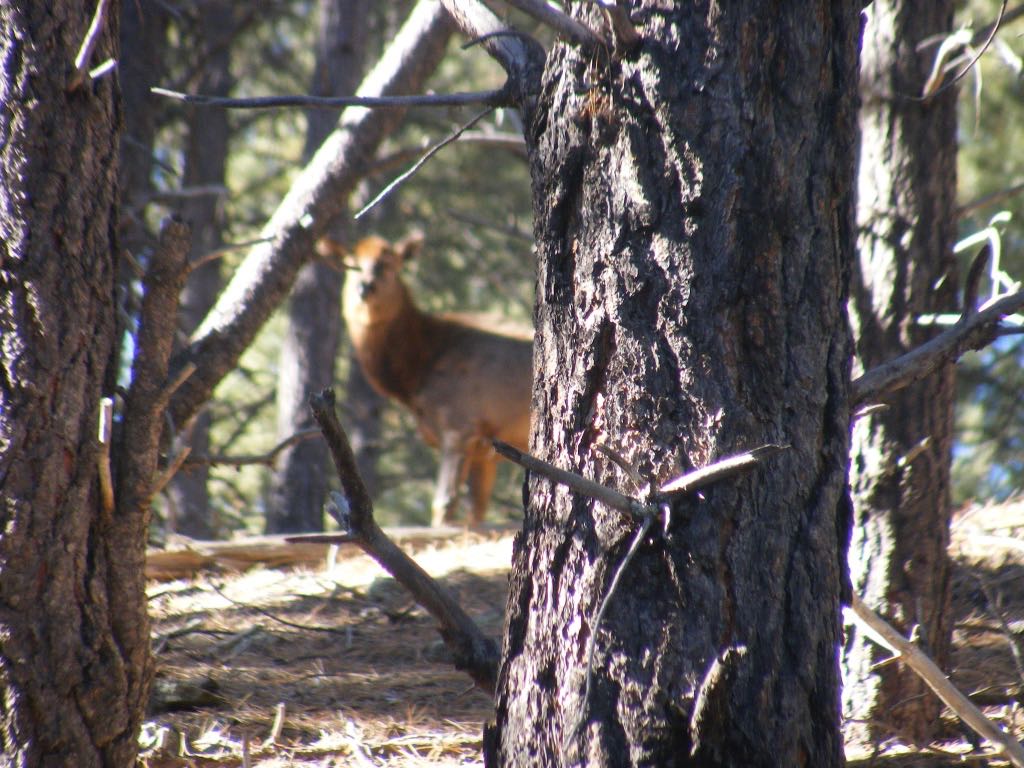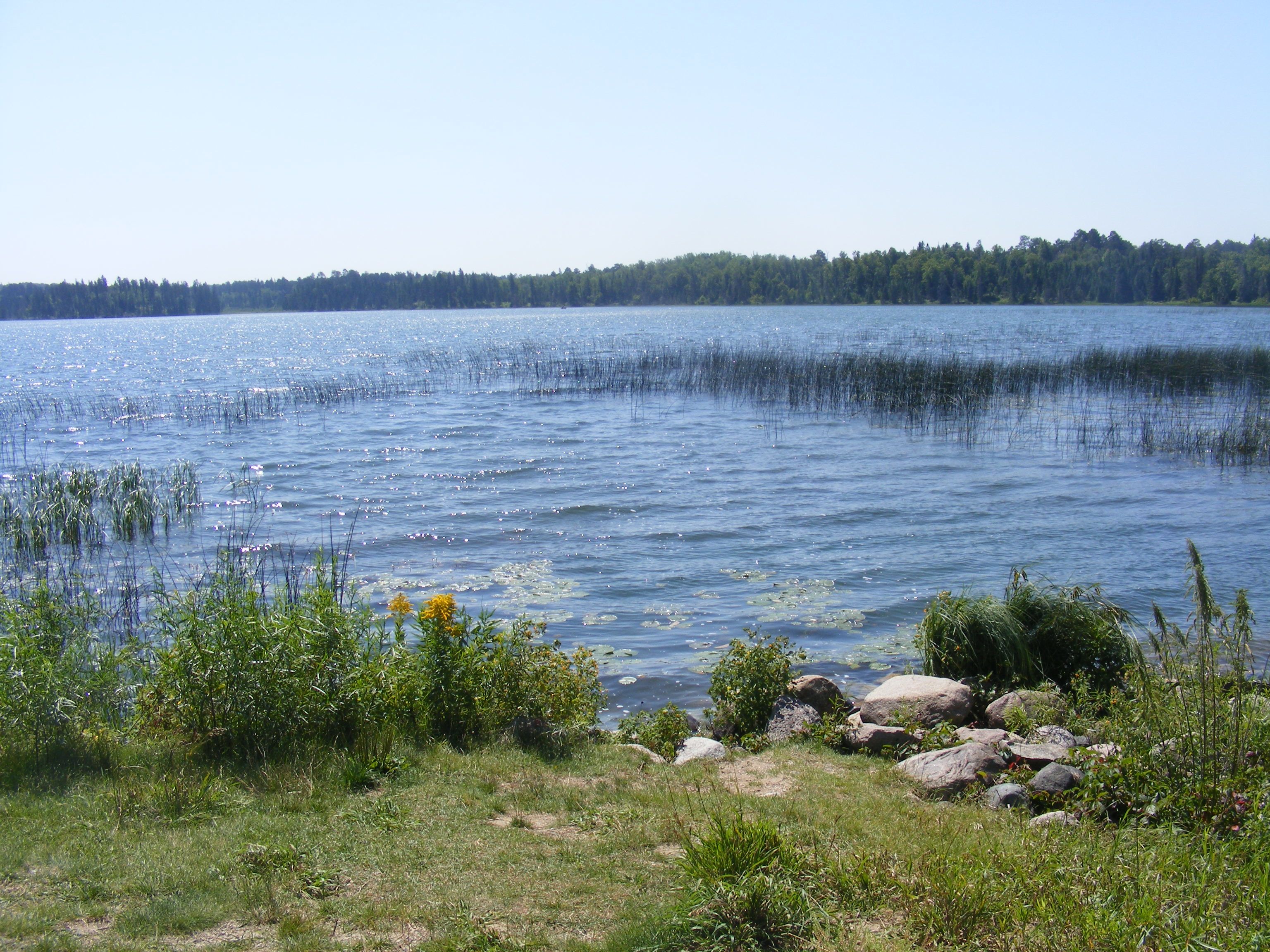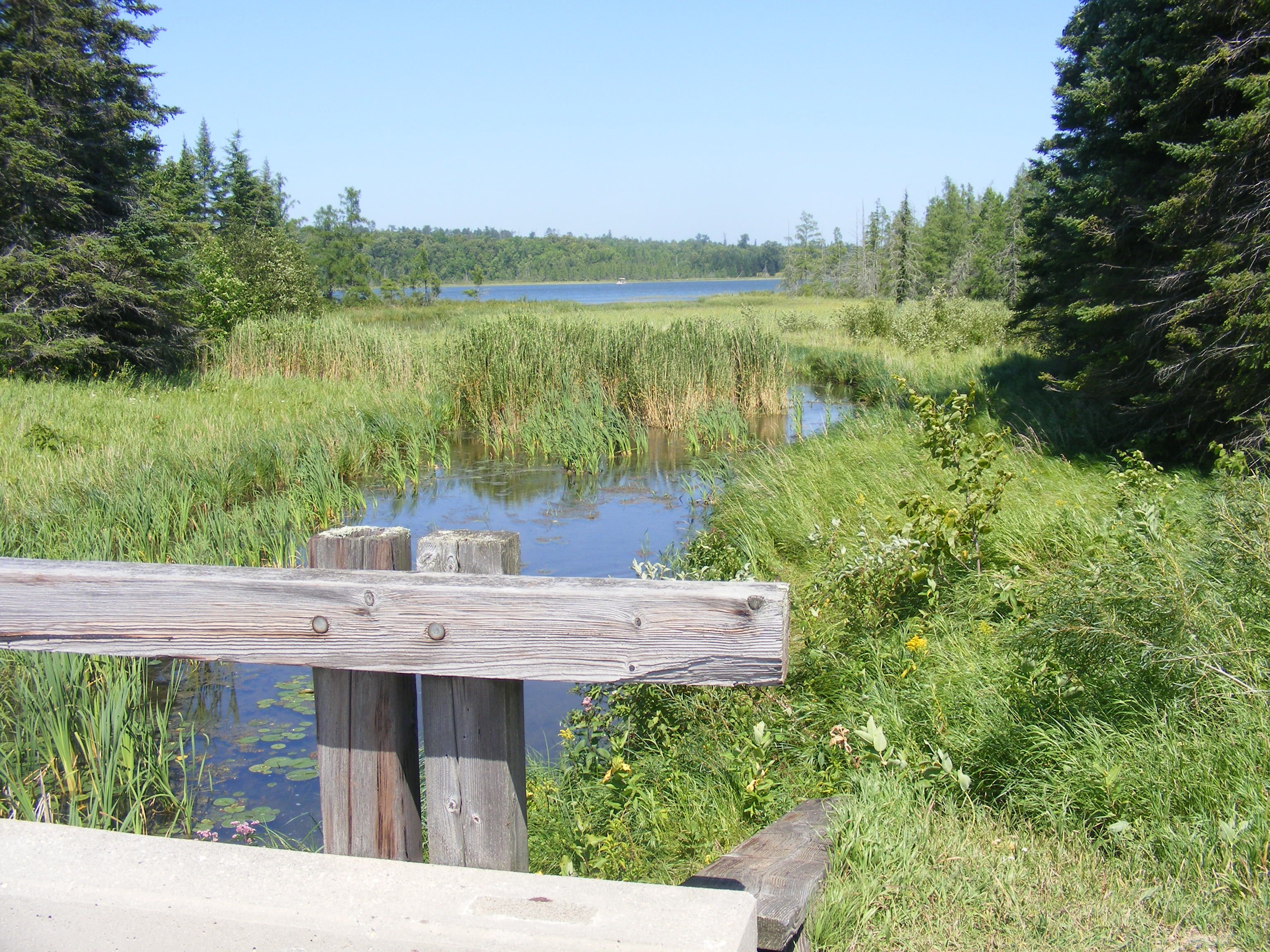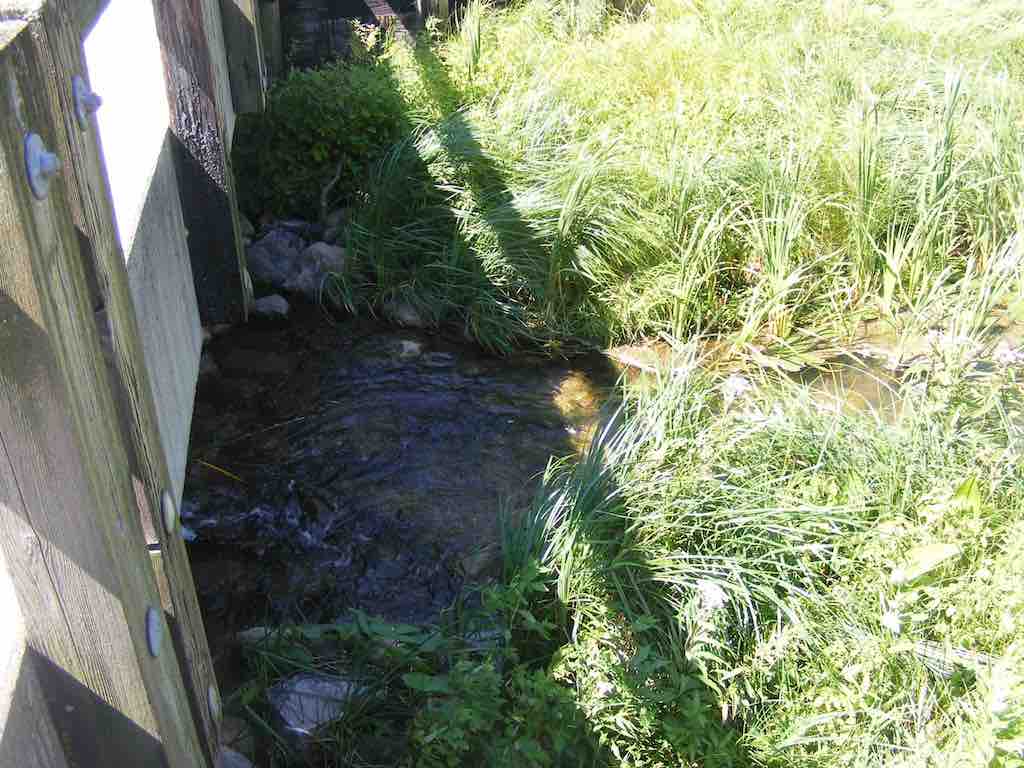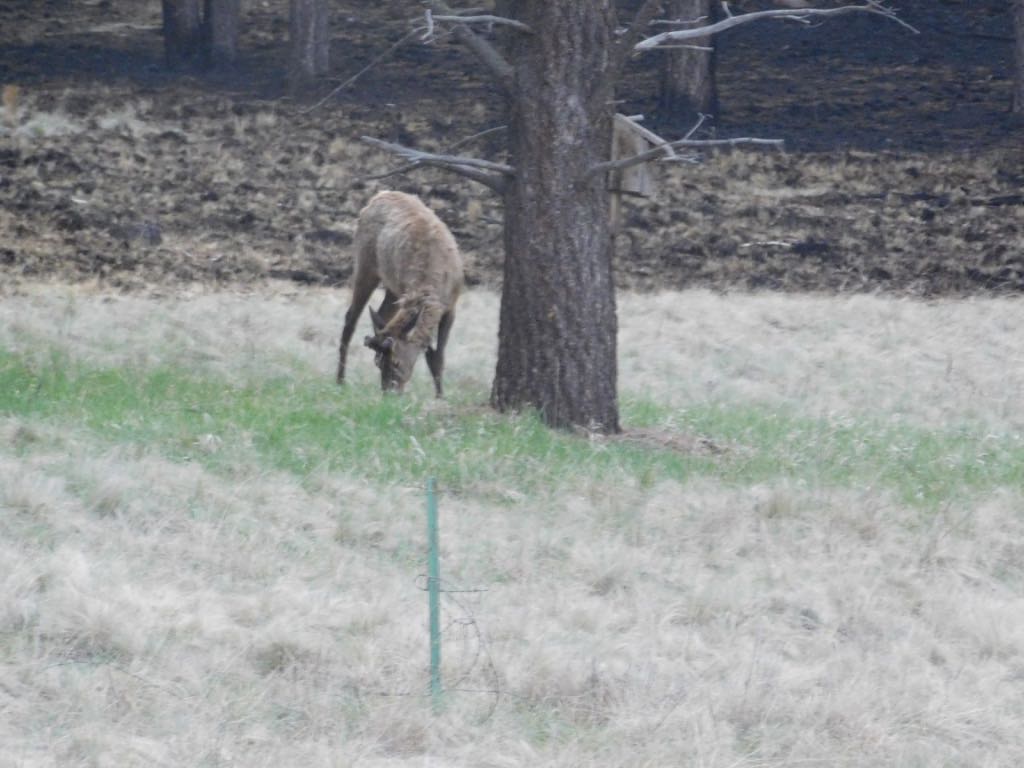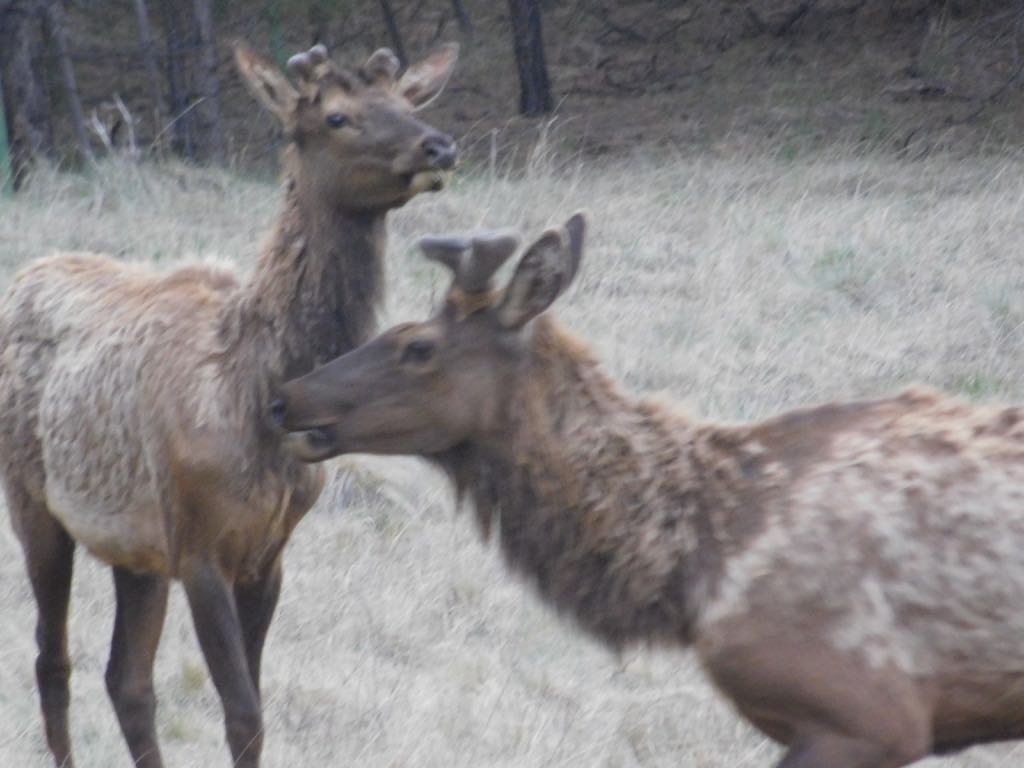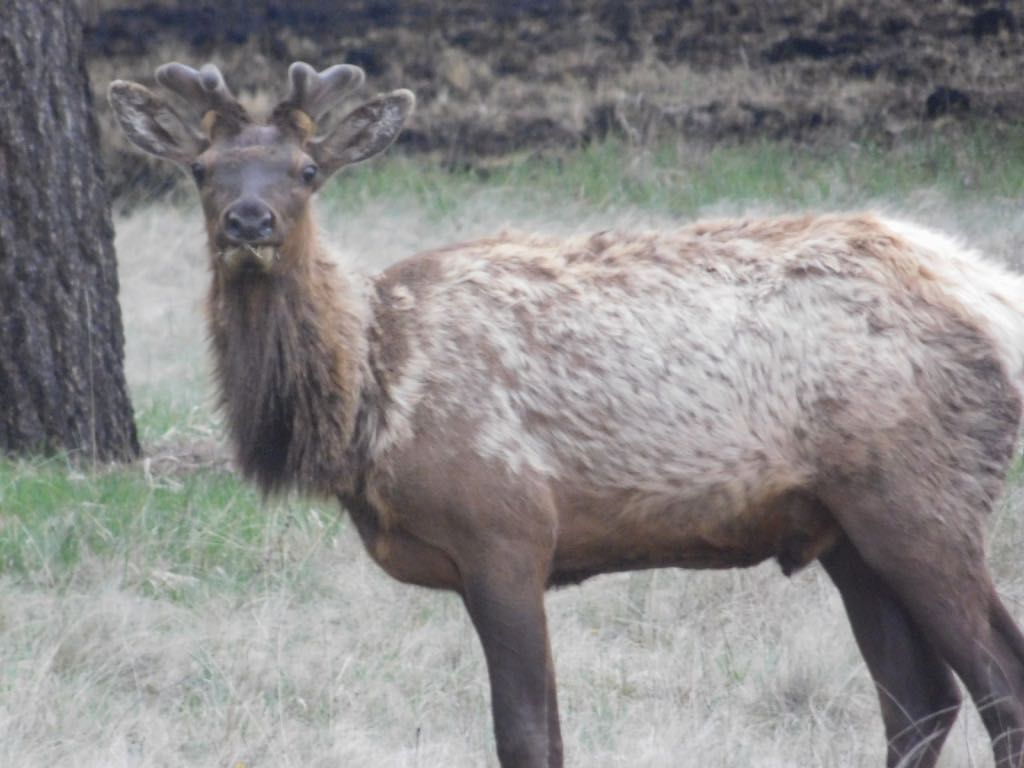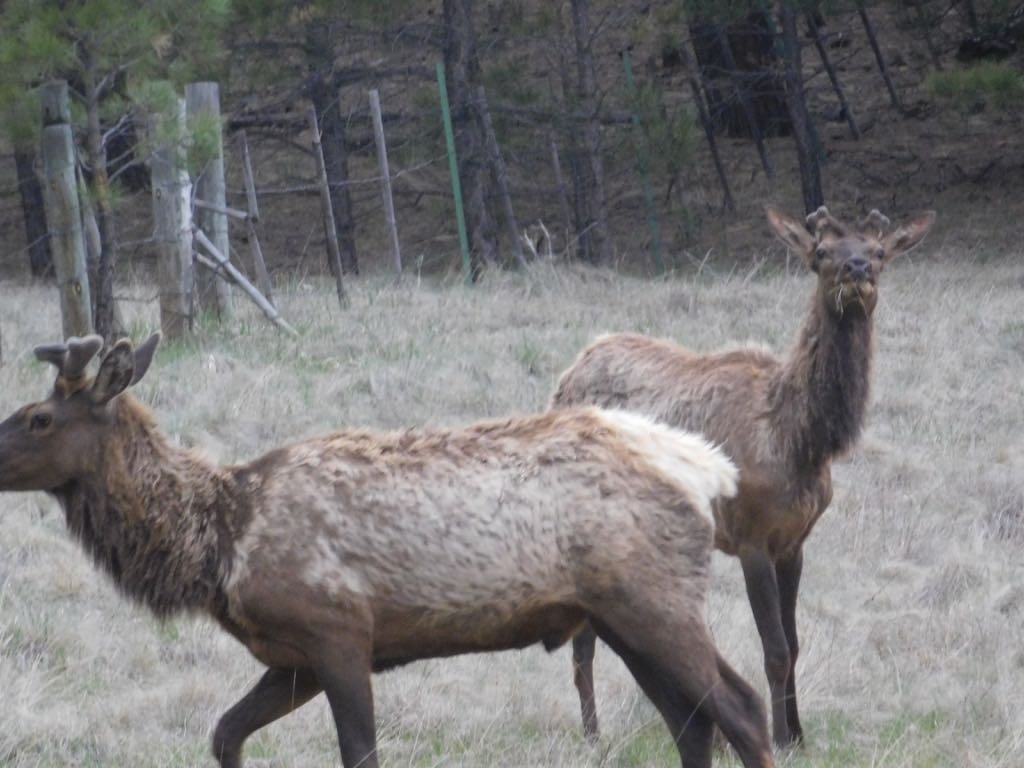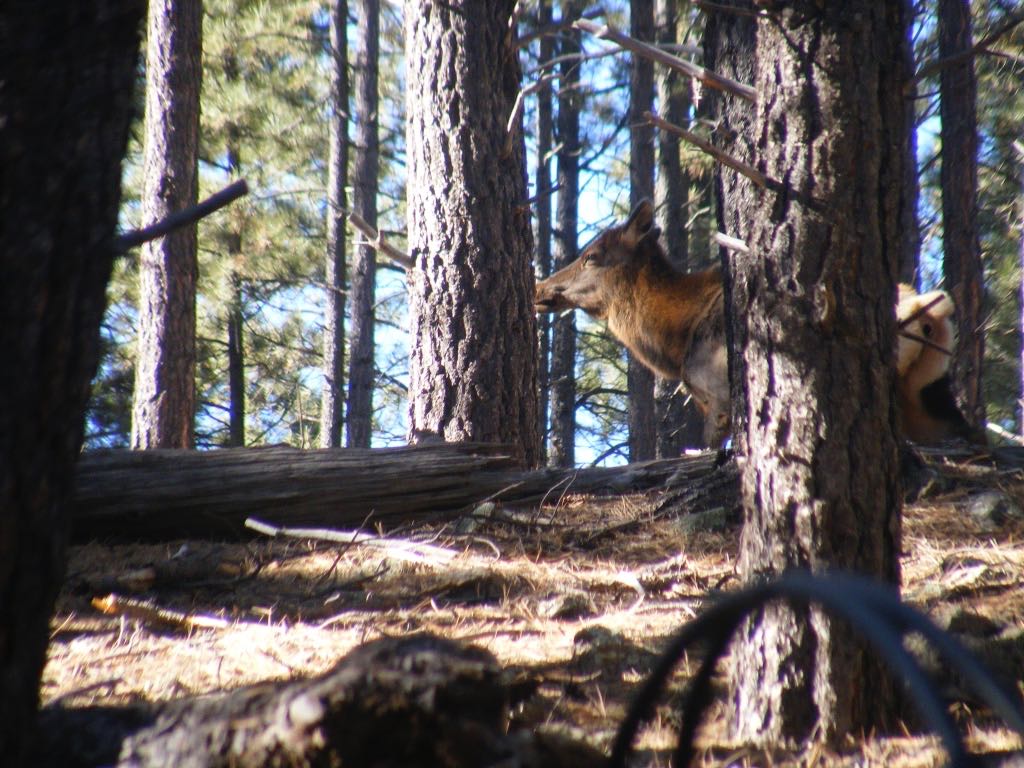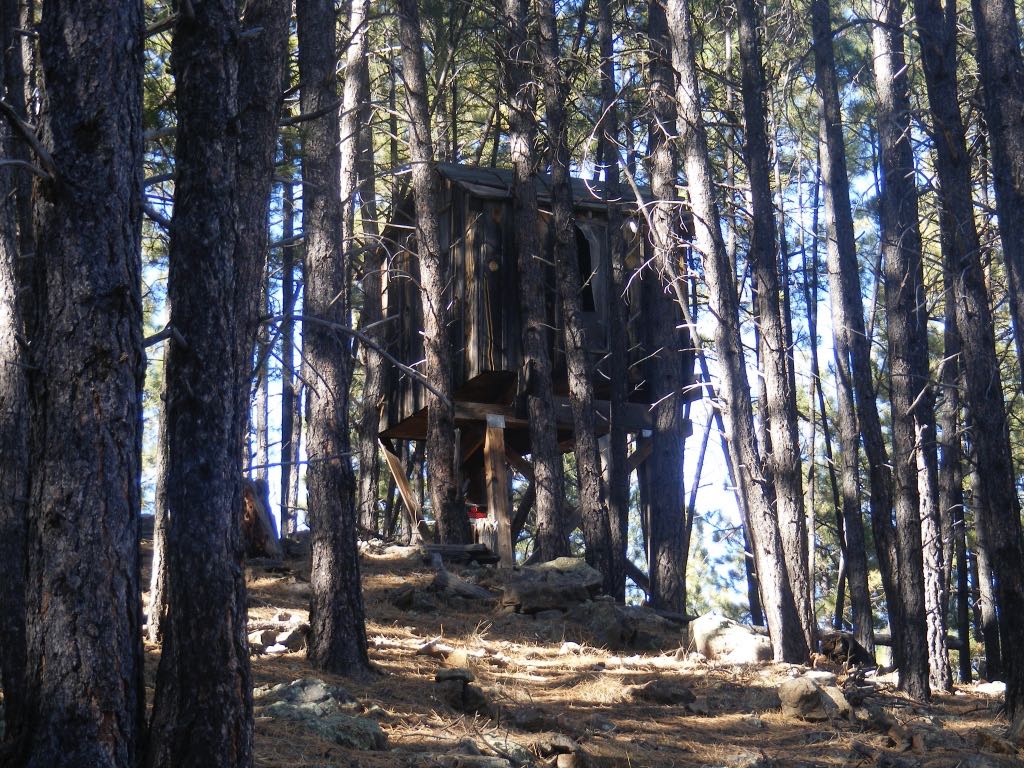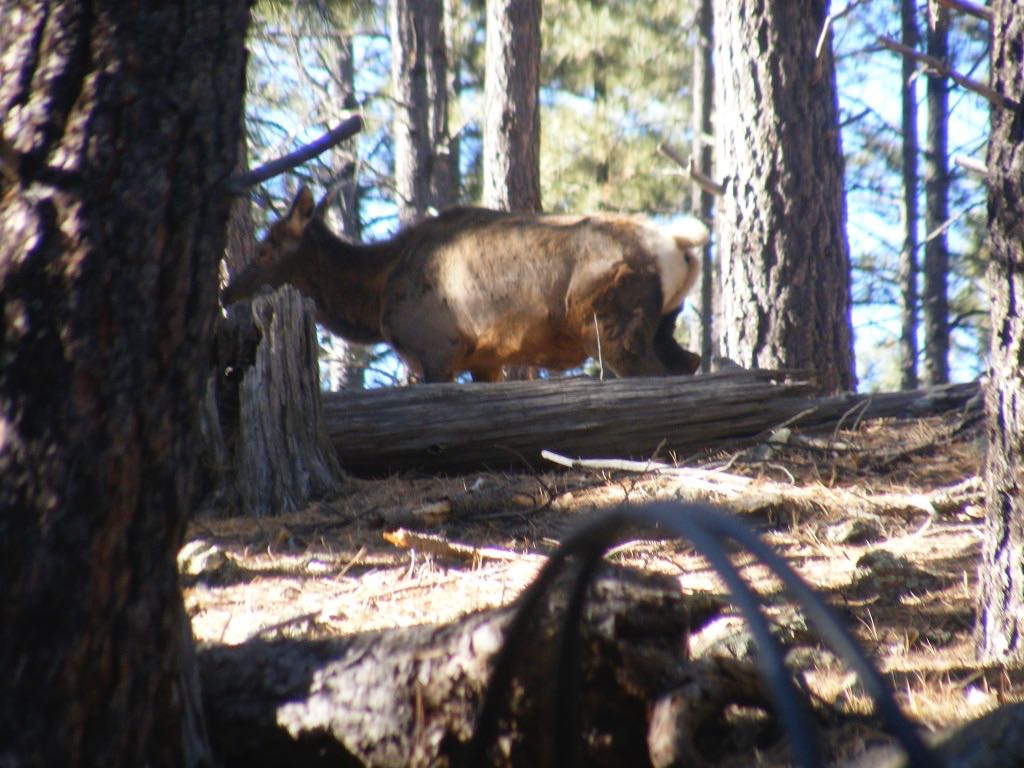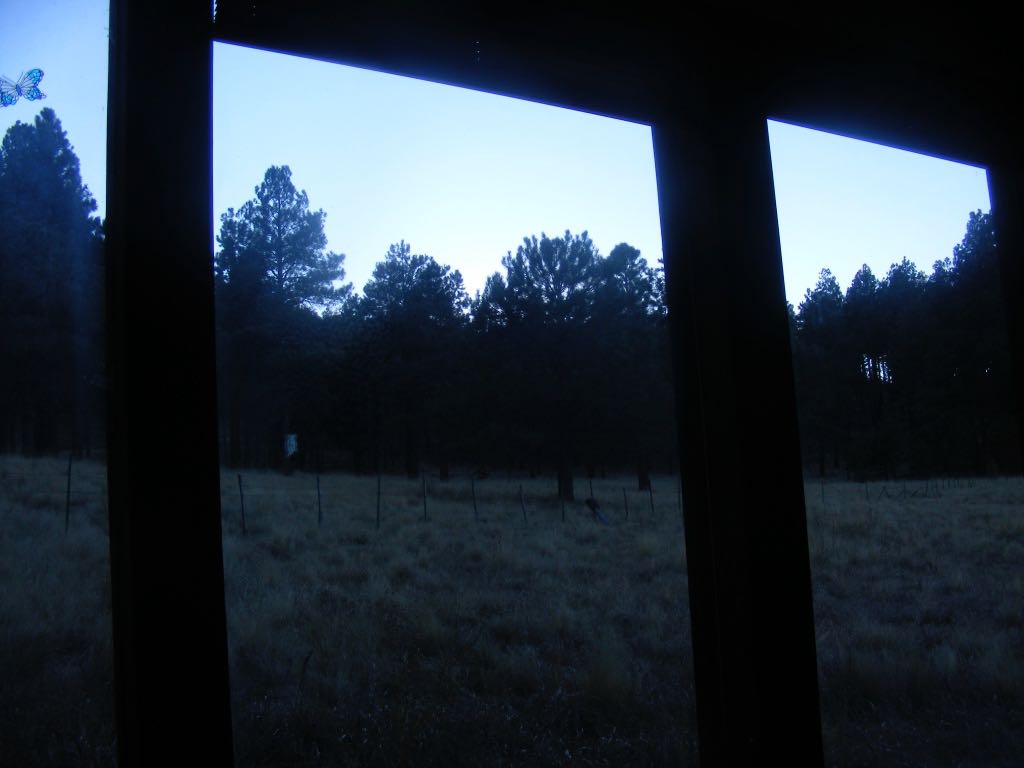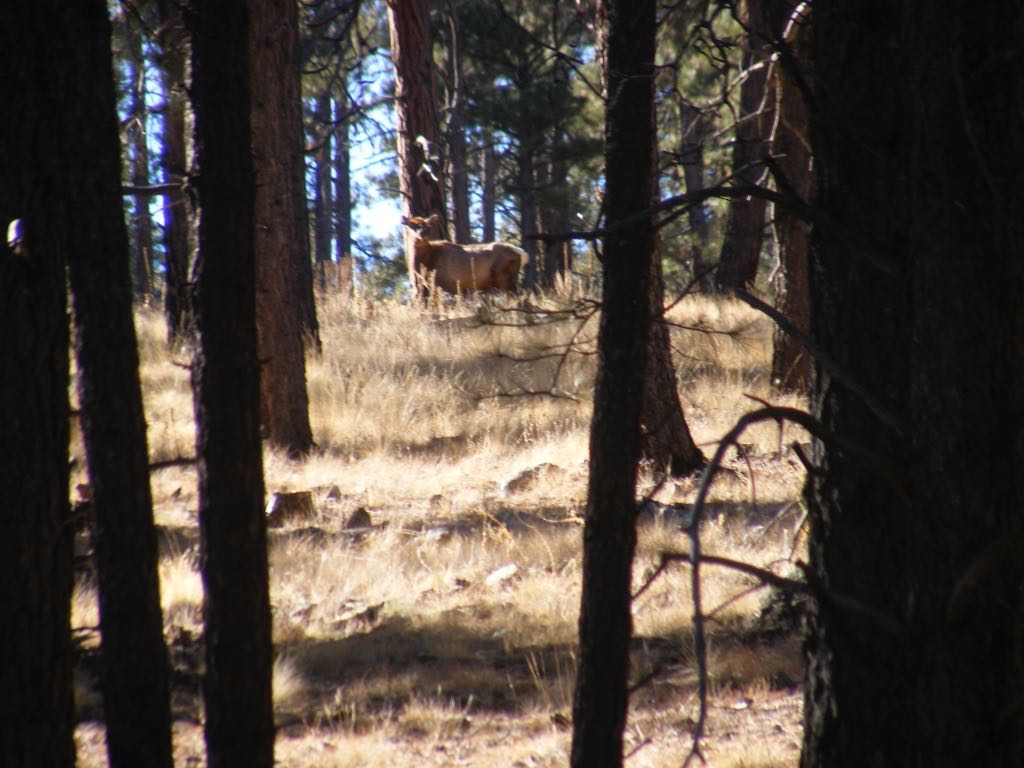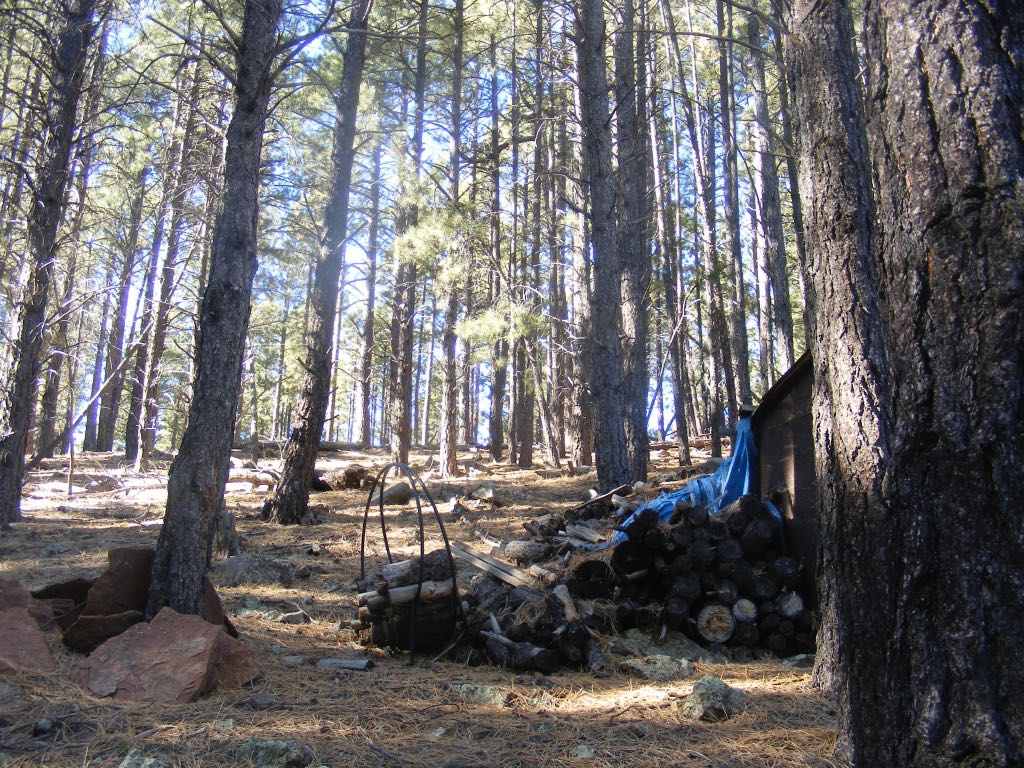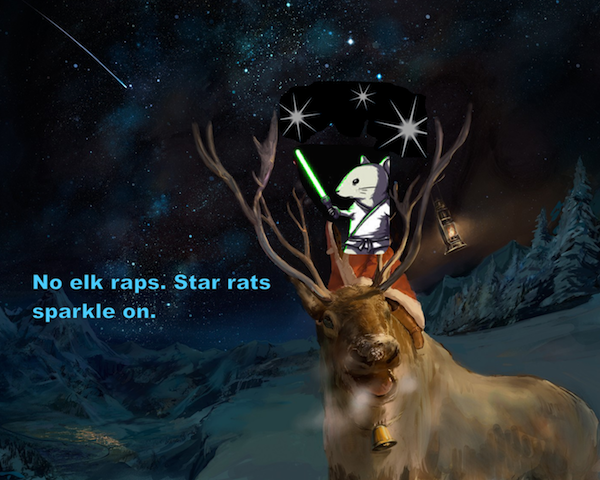I’ve just finished a walk on A-1
Mountain, a big hill behind our cabin here in Northern
Arizona. At the foot of the mountain, there’s a prairie
of indigenous grass and that’s where the cabin is
located. Behind it, you can see the hill and a forest of
tall pines.
I climbed the hill slowly. It’s pretty steep and
although I often hike in the desert where I easily climb
the rocky hills, this northern one is more demanding.
It’s because of the altitude; the cabin is at more than
seven thousand feet above sea level.
Halfway up the slope, I see another cabin abandoned by
its owners because of the coming winter climate. It’s
only 200 yards from ours but I have never seen any sign
of anyone living there: no car, no lights that shine
through the cracks in the closed curtains.
Next door, there’s another cabin also abandoned as ours
will be tomorrow when I go.
In the 80s when I called my parents on the phone I often
heard them say, “There were ten elk in front of the
house this morning.”
With regard to this, I always had bad luck and frankly I
don’t think I ever saw a single elk They are summer
houses and I’m here not only to avail myself of the
beauty, solitude, and nature that this area of Arizona
offers, but to prepare the house for the fall of winter.
You can’t easily live here during the winter. When
there’s a storm, the roads get blocked by snow and it’s
so cold that it’s difficult to heat the cabin. We have
neighbors next door that live here all year. They have
good heating and a four-wheel-drive pick-up truck. My
truck isn’t a four-by-four.
I walked around the two little houses on the hill. I
know that I am trespassing and I was startled at seeing
something moving among the pines. It was an elk, a
female walking very slowly on the hill. It was as big as
a horse. It stopped and looked at me a minute before
continuing on. Then it stopped again and looked at me
once more. I followed it as it walked, stopped, and
looked at me. I didn’t get close to it since I’m afraid
of animals that are larger than I (and also a few that
are a lot smaller). I took a few pictures.
In the 80s when I called my parents on the phone I often
heard them say, “There were ten elk in front of the
house this morning.”
With regard to this, I always had bad luck and frankly I
don’t think I ever saw a single elk
back then. Now things have changed. In broad daylight I
have very often seen lots of elk here. In fact, a while
ago I saw a herd of more than two-hundred that crossed
our field, the does with their fawns and the males with
their huge antlers.
At night when I’m in the cabin reading, I hear a noise
outside. It’s the sound of the hooves of these giant
deer walking upon the soft ground of our field. The
silent herd moves slowly on the border of the forest
where the sound of their hoof-steps disappears.
Many times I have opened the back door and have directed
a flashlight towards the elk. The light never
illuminates the herd very well and it’s hard for me to
see the dark forms of the animals through the gloom.
However, I see quite plainly the orange eyes that shine
in the light. They glow like coals.
The herd and the orange eyes move away slowly but there
are always two or three pairs that don’t move at all.
Those bright eyes observe me as the herd disappears into
the woods. They’re protecting the others, and when the
other animals of the herd have gone, the light from
those two or three pairs of eyes fade and vanish in the
darkness of the night.
Today on the hill I saw nuthatches and woodpeckers in
the pines. I started walking over there and I came
across the Carothers’ cabin. They were friends of my
parents. I had forgotten that their cabin was so close
to ours. There are still swings on the side of the house
although the kids that I used to know must be at least
thirty years old now. Perhaps the swings are for their
kids. The memory of the get togethers we used to have
there with the Carothers so long ago come to mind.
“How the years have blown by!” I said to myself. “Where
could the years of the 80s have gone and, oh the
nineties and holy cow the first ten years of the
twenty-first century!”
These thoughts depressed me a little, but I started on
my way back happy. I left the woods and saw the prairie
and the towering San Francisco Peaks to the north whose
yellow meadows and green forests seemed so close that I
could almost reach out my hand and touch them.
According to the weather forecast, it was going to
turn much colder and windier that day and indeed an icy
wind had already begun to blow. The dry stalks of grass
swayed and made a whispering sound—the eternal voice of
the lonely prairie.
5. Un paseo
Acabo de dar un paseo en montaña A-1, una gran colina
detrás de nuestra cabaña aquí en el norte de Arizona. Al
pie de la montaña hay una pradera de hierba indígena y
allí está situada la cabaña. Detrás se ven la colina y
un bosque de pinos altos.
Subí la colina lentamente. Es bastante empinada y aunque
muy a menudo voy de caminata en el desierto donde
fácilmente subo las colinas rocosas, esta colina norte
me lo pide mucho más. Es debido a la altitud; la cabaña
está a más de siete mil pies de altura sobre el nivel
del mar.
A media cuesta vi otra cabaña abandonada por sus dueños
por el clima del invierno que viene. Está solamente a
200 metros de la nuestra pero nunca he visto un solo
indicio de un habitante allí, ni coche, ni luz que emane
por las rendijas de las cortinas cerradas.
Al lado hay otra cabaña abandonada como lo estará la
nuestra mañana cuando me vaya.
Son casas de verano y estoy aquí no solamente para
aprovechar la belleza, soledad y naturaleza que ofrece
esta área de Arizona, sino para preparar la casa para el
invierno.
No se puede vivir aquí fácilmente durante el invierno.
Cuando hay una tormenta, los caminos se encuentran
bloqueados por la nieve y hace tanto frío que es difícil
calentar la cabaña. Tenemos vecinos al lado que viven
aquí durante todo el año. Tienen buena calefacción y una
camioneta de tracción en las cuatro ruedas. Mi camioneta
no es un “cuatro por cuatro.”
Yo andaba alrededor de las dos casitas en la colina.
Sabía que había entrado sin autorización en
propiedad ajena y me sobresalté al ver algo que se movía
entre los pinos. Era un alce, una hembra que caminaba
muy lentamente por la colina. Era tan grande como un
caballo. Paró y me miró por un minuto antes de
continuar. Luego se detuvo de nuevo y me miró otra vez.
La seguí mientras ella andaba, paraba y me miraba. No me
acerqué a ella ya que temo a los animales que son más
grandes que yo (y también a algunos que son mucho más
pequeños). Tomé unas cuantas fotos.
En los años ochenta al llamarles por teléfono, oía a mis
padres muchas veces decir:
—Había diez alces frente a la casa esta mañana.
Respecto a eso, yo siempre tenía mala suerte y
francamente no creo haber visto ni uno solo en aquellos
años. Hoy en día las cosas han cambiado. En pleno día
muy a menudo veo muchísimos alces aquí. De hecho, hace
poco vi un rebaño de más de doscientos que atravesaba
nuestro campo, las hembras con sus crías y los machos
con sus grandes cornamentas.
En la noche cuando estoy en la cabaña leyendo, suelo
escuchar un ruido afuera. Es el sonido de los cascos de
estos venados gigantes pisando el suelo suave de nuestro
campo. El rebaño callado se mueve despacio al borde del
bosque donde el sonido de sus pasos desaparece.
Muchas veces he abierto la puerta de atrás y he dirigido
la luz de una linterna hacia los alces. La luz nunca
ilumina el rebaño muy bien y me cuesta ver en las
tinieblas las formas oscuras de los animales. En cambio,
veo muy bien los ojos anaranjados encendidos por la luz.
Arden como ascuas.
El rebaño y los ojos anaranjados se alejan sin prisa
pero siempre hay dos o tres pares que no se mueven en
absoluto. Estos ojos ardientes me observan mientras el
resto se refugia en el bosque. Estos están protegiendo a
los demás y cuando los otros se han ido, la luz de
aquellos ojos se funde en la oscuridad de la noche.
Hoy, en la colina vi trepatroncos y pájaros carpinteros
en los pinos. Yo fui caminando hacia allí y me encontré
con la cabaña de los Carothers, amigos de mis padres. Se
me había olvidado que la suya estuviera tan cerca de la
nuestra. Todavía hay columpios al lado de la casa aunque
los niños que yo conocía hoy deben de tener al
menos treinta años. Tal vez los columpios sean para los
niños suyos. Vinieron a mi memoria las reuniones que
teníamos allí con los Carothers hace tanto tiempo.
“¡Cómo han pasado los años!” me dije. “¿A dónde habrán
ido los años ochenta? y !Dios mío! los años noventa y
¡Ay! los primeros diez años del siglo veintiuno.”
Me desanimaron un poquito esos pensamientos, pero
emprendí la vuelta a casa contento. Salí del bosque y vi
la pradera y la altísima Sierra San Francisco al norte
cuyas vegas amarillas y bosques verdes me parecían tan
cercanos que casi podía alargar el brazo y tocarlos.
Según la previsión del tiempo iba a volverse mucho más
frío y más ventoso aquel día y de hecho un viento helado
ya había empezado a soplar. Los tallos secos de hierba
se mecían y producían un sonido susurrante, la voz
eterna de la pradera solitaria.


